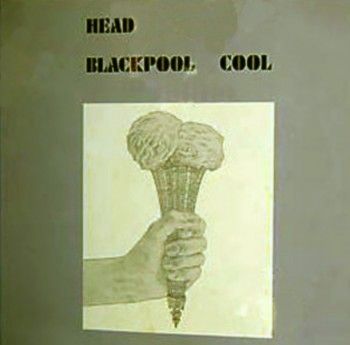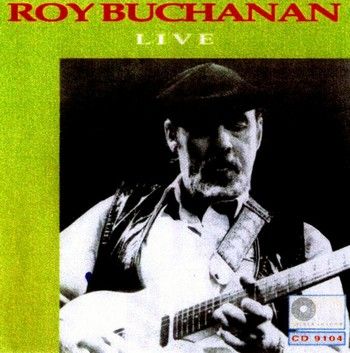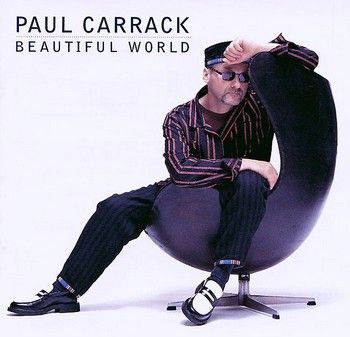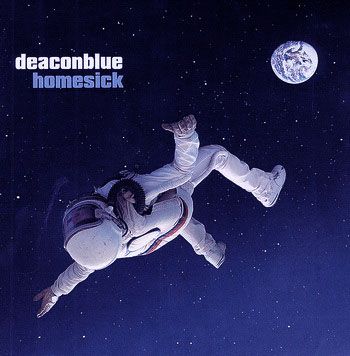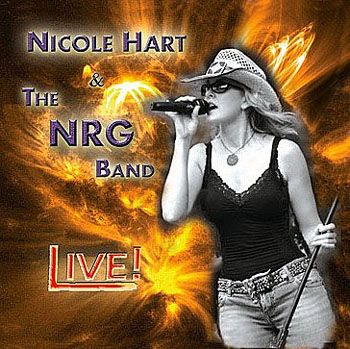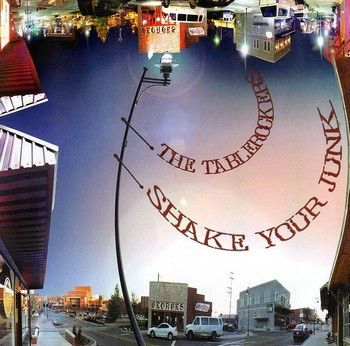Medicine Head - Don't Stop the Dance - 2005 - Angel Air
With Don't Stop the Dance, the Angel Air label provides the missing pieces to the Medicine Head story, filling in the gap during the mid-'70s when the duo of John Fiddler and Peter Hope-Evans expanded to a quintet before shrinking back to a twosome for their grand finale, Two Man Band. Bringing on board former Family drummer Rob Townsend, ex-Freedom guitarist Roger Saunders, and future Cockney Rebel bassist George Ford, the pumped-up Head began work on a new album in 1974. It was never finished, although two singles, "(It's Got to Be) Alright"/"Part of the Play" and "Mama Come Out"/"Come On Over" did eventually emerge. In the end though, the band never really coalesced, mostly because Fiddler and Hope-Evans never quite worked out how best to use them as a unit. Individually, though, they arranged them magnificently, as "Dark Side of the Moon" illustrates. This exquisite ballad was delicately constructed solely around a bassline and acoustic guitar to splendid effect. Still, on the blues-heavy title track, the driving covers of "Walking Blues" and "Just Wanna Make Love to You," and both sides of its rocking R&B second single, the band does function more than adequately. However, the showstoppers are the sparser-sounding numbers, like "You Gotta Love Somebody," for even at its most driving the band never quite gels. This is equally evident on the three live bonus tracks, all which hint at a hesitation in Head's sound and a sense of insecurity about the music. Perhaps the unit just needed more time to feel its way through, but it wasn't to be. By 1975, Head were again a duo, without even an album to show for their efforts. The final act was yet to come, but Dance finally puts to rest all the questions and speculation about this shaky period in their career. Jo-Ann Greene © 2010 Rovi Corporation. All Rights Reserved http://www.allmusic.com/album/dont-stop-the-dance-r820856/review
Don't Stop the Dance features lost recordings of Britain's Medicine Head, dating from 1974, the time on which the outfit changed ways from a duo into a full rock band (adding ex-members of Family and Freedom to the force). Full of harmonica, Jew's harp and blues rock, these recordings sound like a crossover between the free-spirit white-blues of Peter Green's Fleetwood Mac, the R&B pychedelia of The Rolling Stones and the fierce folk romanticism of Thin Lizzy. The sound issue, while suffering some tape hiss and muffle on certain tracks, is certainly nothing to be troubled about, as the recordings seem to be clear enough and quite effective. However, as such products tend to be, this release should be considered as a compilation of unreleased songs rather than a consistent, materialized body of work. It is definitely a worthy addition for fans (who would also appreciate the era-documenting booklet), but others should approach it more carefully and knowingly. (8/10 for the fans, 5.5/10 for the others) review by & © Avi Shaked All Rights Reserved 2004 http://www.maelstrom.nu/ezine/review_iss34_2417.php?sid=&page_rs=4&osCsid=d5f4759fb8c26d6f3e8d7af537c3a39d
Medicine Head always were a two man band (John Fiddler and Peter Hope-Evans) but mid-74, when this album was recorded, found them having expanded into a full five-piece band for both live and studio work. With hit singles under their belt, this album should have built upon their new-found commercial success. I say "should have" because this album finds the band unsure what they want to be - a full band or the minimalist two-piece they always were. As such, this album is neither one nor the other. Hope-Evans felt he was reduced from being half the band to just being the harmonica player and ironically is most clearly audible on the live bonus tracks. The result is an album that isn't bad, but isn't a smash either. Unreleased at the time, the band began to disintegrate shortly afterwards (becoming a two-piece again) but by then it was too late and the momentum had been lost. This album certainly bears repeated listening, and it would be unfair to place too much emphasis on the "unreleased at the time" tag (meaning there must be something wrong with it). Recommended. © 2005 Adrian Perkins http://www.hunter-mott.com/discography/dont_stop_the_dance.html
Q. Who recorded the very obscure album, "Dark Side of the Moon" recorded in 1972 ?...........A. Medicine Head ! Despite having recorded six original albums, and having four hit singles in the early seventies, including "(And The) Pictures in the Sky," "One and One is One," and "Rising Sun," this band is now all but forgotten. "New Bottles Old Medicine," @
NBOM was Medicine Head's first album released on the late, great BBC Radio One DJ John Peel's Dandelion label. In the early days Peel helped the careers of Marc Bolan, David Bowie and Captain Beefheart, by giving them studio-time to record. He also saw the potential in bands like Joy Division, The Fall, The Smiths, and the Undertones, whose great Teenage Kicks was his all-time favourite single. Peel saw the potential in Medicine Head, who had a sound all of their own. The original two man line-up produced some great folksy blues rock using a Jew's Harp,mouth organ, an acoustic guitar, and a handheld drum. Their albums never received much commercial notice. Medicine Head never placed an album on the UK album chart, but this wasn't unusual in the early seventies, as many great bands were overshadowed by huge groups like Led Zeppelin, and Deep Purple to name but two. "Don't Stop the Dance" has been called Medicine Head's 'lost' album. Partly recorded at The Manor, Oxfordshire, England in 1974, it includes some singles from an unsuccessful phase with the WWA label, and also some unreleased sessions by Medicine Head as a five piece band. John Fiddler and Peter Hope-Evans were the original Medicine Head. On these recordings from the 1974/5 period, they were joined by Rob Townsend (Family), Roger Saunders (Freedom) and George Ford (Cockney Rebel). At other times the line-up also included Tony Ashton, formerly of Ashton, Gardner and Dyke, and Keith Relf, the former Yardbirds vocalist. It has been said that the duo were never fully at ease with the extra musicians, and felt overshadowed by musicians like Rob Townsend and George Ford. John Fiddler provided the master tapes from his personal archives, and also supervised the remastering of these tracks. Arguably, Medicine Head had the potential to be a lasting force in rock music. Give this album a listen, and if you can find their 1975 "Live At The Marquee" album, you should buy it.
TRACKS1. Don't Stop the Dance
2. Dark Side of the Moon
3. Walkin' Blues - Robert Johnson
4. Lay Around
5. You Gotta Love Somebody
6. Part of the Play
7. Can't Live a Lie
8. Just Wanna Make Love to You
9. Come on Over
10. Mama Come Out
11. It's Got to Be Alright
12. Don't Stop the Dance - (Live)
13. One and One Is One - (Live)
14. Rising Sun - (Live)
MUSICIANSJohn Fiddler (vocals, guitar)
George Ford (vocals, bass guitar)
Roger Saunders (guitar, background vocals)
Rob Townsend (drums, percussion)
Peter Hope-Evans (harmonica, mouth bow, Jew's harp)
BIOFormed in Stafford, England in 1968, the British blues duo Medicine Head comprised vocalist/multi-instrumentalist John Fiddler and Peter Hope-Evans, who played the harmonica and jew's harp. Upon their formation at art college, Medicine Head became a staple of the local club circuit, eventually recording a demo which found its way to influential BBC radio personality John Peel, who began championing the track "His Guiding Hand." Other DJs soon followed suit, and quickly the duo was on the brink of stardom. With Peel's continued assistance, Medicine Head entered the studio to begin recording their 1970 debut LP New Bottles Old Medicine. Their focus shifted from basic blues to a more intricate sound for 1971's Heavy on the Drum, produced by former Yardbird Keith Relf; after scoring a surprise hit with the single "(And the) Pictures in the Sky," Hope-Evans left the group, and was replaced by Relf and drummer John Davies for 1972's The Dark Side of the Moon. Hope-Evans rejoined prior to 1973's One and One Is One, which launched the title track to the Top Three of the U.K. singles chart. Now a five-piece also including guitarist Roger Saunders, onetime Family drummer Rob Townsend and bassist George Ford, Medicine Head notched two more hit singles, "Rising Sun" and "Slip and Slide," but 1974's Thru' a Five failed to chart, and the group began to disintegrate. Only Fiddler and Hope-Evans remained by the time of 1976's Two Man Band, and after one last single, "Me and Suzy Hit the Floor," Medicine Head officially disbanded. Fiddler later resurfaced in the British Lions, followed by a stint in Box of Frogs and finally a solo career, while Hope-Evans contributed to the Pete Townshend albums Empty Glass and White City. © Jason Ankeny © 2010 Rovi Corporation. All Rights Reserved http://www.allmusic.com/artist/medicine-head-p19278/biography
MOREIt's fair to say that no one, not even us, the people who packed their shows, quite realised at the time exactly what Medicine Head were. They were great fun. They were loud. They had long hair. They were a rock band (well, two people who sounded like a rock band). And they were very personable to young chaps in their fourth year at grammar school who appreciated all of that sort of thing. Certainly by the time they'd started sneaking blues into the charts with the likes of (And The) Pictures In The Sky under the guise of beguiling pop songs, outsiders found it difficult to look beyond the fact that one of them, Peter Hope-Evans, was doing something with a jew's harp and the other, John Fiddler, was playing his guitar while sitting behind a bass drum. What we all missed, of course, was that Medicine Head were actually the history of rock 'n' roll (and, as it turned out, the future) and blues and plenty of other strands of American music. All channeled unselfconsciously through two unlikely young men from the Midlands. Not something you¹d understand in your teens, but with 20-20 hindsight... They were the spirit and the sound of grizzled bluesmen while at the same time their crashing, home-made two man band noise, in a period when the rest of the pop-making world was wearing Lurex trousers, was the spirit and the sound of the incoming tide of punk. One second they were angry young men, the next they were playing the sweetest songs imaginable (His Guiding Hand, from their debut album, New Bottles, Old Medicine, was even memorably played during our school assembly, during a brief period when students were invited to select appropriate music for the occasion). In Medicine Head music there were definitely no guitar solos, even more definitely no drum solos, and certainly no synthesisers (except the guest appearance of a Mellotron on the One And One Is One album). Just tape-loopy, bluesy, boogieing guitar riffs coming round and round, riffs that made - and still make - you want to smile and dance, all played through the rudest of amps. And then there¹s Peter's awesome harmonica huffing and puffing, coming down like a steam train on vitamin supplements, who thought nothing of 10-minute solos, particularly on the roaring favourite To Train Time (originally on the album Heavy On The Drum with a stomping live version on One And One). Even today memories of those early thrashing, sweaty shows linger as a highpoint of youth, like going to see no other band before or since "We saw ourselves like San Francisco Bay blues guys," says John. "We didn't consider ourselves musicians. It almost seems sad sometimes that we had hit records, it might have been better to have stayed an album band." Listen to any of their records - half a dozen albums between 1969 and 1976, another album's worth of dedicated singles tracks and the recent Angel Air album Live At The Marquee 1975 - and there are road songs, and the train songs, and girl songs. The sound of America infused with English charm and innocence. John and Peter went at it for well over half a decade, through thick and thin, the group bobbling, uneasily, through different line-ups, Peter leaving and then returning, eventually going through a spell as a five-piece. But while every record was touched with that Medicine Head magic, they were never a big group at heart. Two Man Band captures the best of their, well, two man band outlook on life but combines it with flourishes from the best of British musicians, including Ashton, Gardner & Dyke and Family piano man Tony Ashton, Mott the Hoople keyboard whiz Morgan Fisher (later to rock the States with John in British Lions and form a lasting friendship), and pedal steel virtuoso BJ Cole, who has played with everyone from John Cale to The Verve. The result is Medicine Head at their most innnocent, John's rootsy, bluesy, poppy songs reinvented so that even the gentle rockers are imbued with a dreamlike quality. Rock 'n' roll for a still summer's afternoon. It was to be the band's final album. They went out in a laid-back fashion, the music hand-crafted to perfection. Released on CD for the first time, the album includes three bonus tracks, the freewheeling single Me And Suzie (Hit The Floor), and the almost-forgotten, under-rated B sides Moon Child and Midnight, both Medicine Head at their softest and best. "Pete Townshend helped us out on the album," says John. "We were broke at the time, being sued by all sorts of people because we didn't want to carry on as we were, as a five-piece. Our deal with Polydor had ended and Pete just suggested that we make a record at his Eel Pie studio. I got in touch with Chas Chandler, who had produced Slade, and he liked it and so it came out on his Barn label. It was basically Pete and myself with some friends. And we were still playing live then, just the two of us, often to punky-type audiences. We were akin to punk in spirit, and that's where we failed as a full band. The heart and soul was so diluted that we lost direction. We'd had to draft people in because we'd got trapped by the "That's not how the record sounds syndrome. Back in the old days we'd have just wound up the amps and had the sweat flying." It wasn't exactly a comeback, yet, says John: "We'd lost a lot of credence by then, what with all the changes. I felt shattered, drained but we started getting our audience back. The single off Two Man Band, it's Natural, was getting a lot of play and got into the lower fifties." But Pete decided, for the final, time to go his own way. That was the end of the track for John and Peter whose relationship had always been somewhat, aah, precarious, and emotionally turbulent. The pair still haven't played together since. British Lions : - John finished the Medicine Head date sheet with the help of Morgan Fisher and guitarist Roger Saunders, only recently out of a job when the five-piece disbanded. Almost immediately John, who'd never been glimpsed without his long hair, droopy moustache and glasses, had, to everyone's surprise, reinvented himself as a rock star frontman. Flash clothes and, it has to be said, distinctly dodgy permed hair, for the post-glam British Lions, the tail end of Mott the Hoople with a new head. Oddly, what appeared to be a culture clash actually worked, John's supercharged chugging, strumming electric guitar and rocking romantic songs proving the perfect foil for the laddish Mott outlook on life. Of course, while early Medicine Head were the embodiment of the lo-fi punk spirit, the Lions were somewhat at odds, or at least were seen to be at odds by both public and record company, with the actuality of punk in the late Seventies. A couple of singles on the by now drifting Harvest label, one Medicine Head, one under the Fiddler name, came and went almost unnoticed. Well, not exactly true...completely unnoticed, even by the most dedicated fans. Box Of Frogs : - Then came what is the best Medicine Head album never to be a Medicine Head album, with John taking charge of yet another headless band... the Yardbirds. The irony wasn't lost on anyone. Keith Relf, the original Yardbirds singer on songs like For Your Love had moved on to produce Medicine Head's (And The) Pictures In The Sky, and to be bassman in the three-man, Peter-less line-up that recorded the album Dark Side Of The Moon. Before being electrocuted in a studio accident in 1976, the year of Medicine Head's demise. But while it wasn't a Medicine Head album it wasn't the Yardbirds either, both record and band called - and whoever came up with it should be shot - Box Of Frogs. Anyway, with John involved in writing all the songs, singing them all and playing that chugging electric guitar, in a blind tasting nine of out ten fans would have said it was a Medicine Head record for the Eighties. Snappier and rockier than of old - given the Lions experience, no surprise - but unmistakeable. Producer Paul Samwell-Smith, veteran Yardbirds bassist, was forced to give a sizeable cover credit to John, who'd previously established his production credentials on Two Man Band, for his "assistance". The opener, Back Where I Started, even featured harmonica from ex-Nine Below Zero ace Mark Feltham - who vies with Peter even today for the position of Britain's premier harp sessioneer. Peter, incidentally, now stands in on occasion for Feltham in ex-Pretenders/Paul McCartney guitarist Robbie McIntosh's band. The album was a sizeable college radio hit in the States and should have meant a life in the fast lane but the others had done the Stateside star thing before, vetoed a tour and, needless to say, the whole thing ended in tears. Relations remain fraught - at the end of the Nineties John and I went to see the Yardbirds (shortly after Ray Majors had quit as lead guitarist), and the meeting was, well, strained. : -John Fiddler While John then went on to try various abortive projects he was content to work in his home studio and watch his children grow up and it was the end of the Eighties before I stumbled on him playing solo with an acoustic guitar. But John acoustic isn't an evening of quiet introspection... it's a full-blown one man band rock 'n' roll experience. Standing alone on stage turning a half-empty hall into a jumping joint was a speciality touring with the Blues Band and the Manfreds (for whom ex-Medicine Head drummer Rob Townsend is a stalwart. Another is his regular holiday stint playing the human jukebox for hours each night in the bar of the Sporthotel Strass, owned by the rock 'n' roll loving Erich Roscher in the Austrian ski resort of Mayrhofen.) From the early Nineties a couple of shows stand out as being up there with the best John's ever done. One, at London's sweaty Mean Fiddler, with John's chugging electric guitar ringing out once again, backed by the likes of Ray (helping out on bass) and ex-Cockney Rebel/10cc keyboard man Duncan Mackay. Shortly after that in Feltham, Middlesex, the band were joined for a steaming show by Morgan Fisher, over from his new home in Japan. Since then John's been his own man, doing the quirkiest of solo shows. Earlier this year he took over the packed non-music bar of his local, the Marlborough, in Richmond, Surrey, and made friends with a Friday night crowd of all ages as he prowled amongst them. He's fronted a blues club in Phoenix, put out his home-made cassette State Of The Heart and then - quite astonishing after 30 years - his first solo album Return Of The Buffalo (even bigger in its Angel Air form, The Big Buffalo). He's now back living in Phoenix and, infused with the energy of the endless summer sun, is working on a new band, perhaps Medicine Head, perhaps not, but certainly taking Medicine Head's rootsy, bluesy, rocking sound and creating the lasting legacy the band deserves. Curiously, given their music, John and Peter never got to play the US. Now could finally be the moment for John to pick up the music and run with it. Medicine Head with a dry, dusty desert backdrop. From the train whistle that opens Two Man Band, leading into the airy streamliner strum of it's Natural, through the eerie, pedal steel-tinged Sun's Sinkin' Low and the haunting Too Much Love, this might have been Medicine Head's finale but unlike most farewell albums it's got the feel of a fresh new beginning. It truly is timeless music. By & © Nick Dalton (reprinted with permission). © 2002 - 2010 http://www.john-fiddler.com/bio.html
BIO (WIKIPEDIA)Medicine Head was an English blues rock band, active in the 1970s. The group worked as a duo for most of its career, consisting of John Fiddler (born 25 September 1947, Darlaston, Staffordshire, England) - (vocalist, guitarist, piano player, drummer), & Peter Hope-Evans (born 28 September 1947, Brecon, Powys, Wales) - (harmonica, jew's harp, and mouthbow player). Medicine Head formed in Stafford in 1968, and came to prominence when championed by influential DJ John Peel, who signed them to his Dandelion record label. The group recorded six original albums, the opening trio of which were on 'Dandelion'. That label enjoyed its only UK Singles Chart hit when "(And The) Pictures in the Sky" reached number 22 in 1971. Despite consistent touring, often as support to acts with larger commercial appeal, Medicine Head failed to place an album on the UK Albums Chart. One of their albums was titled "Dark Side of the Moon" (1972), released the year before the Pink Floyd album of the same name. If the Medicine Head release had gained attention, Pink Floyd may have had to reconsider the title of their masterwork. They went through line-up changes with their largely backing personnel, but did achieve a total of four hit singles, the best-known of which are "One and One is One" (No. 3, 1973) and "Rising Sun" (No. 11, 1973). At various times the line-up also included Tony Ashton, formerly of Ashton, Gardner and Dyke, and Keith Relf, the former Yardbirds vocalist. Their later recordings were released on the Polydor record label. Two Man Band was their last album, and Medicine Head finally folded in 1977. In 2005 Angel Air released the album Don't Stop The Dance. In effect it was a 'lost' album, compiling some singles from an unsuccessful period with the WWA label, and some unreleased sessions with the band as a five piece. Since the band's break-up, both members have continued to work in music: Hope-Evans appears on many albums, most prominently with Pete Townshend, and Fiddler was a member of British Lions and Box of Frogs. Fiddler has occasionally revived the Medicine Head name, to tour a show of their hits and release further low-key recordings.



